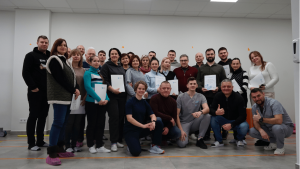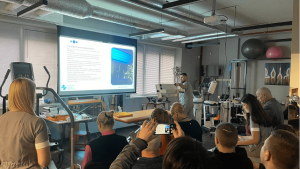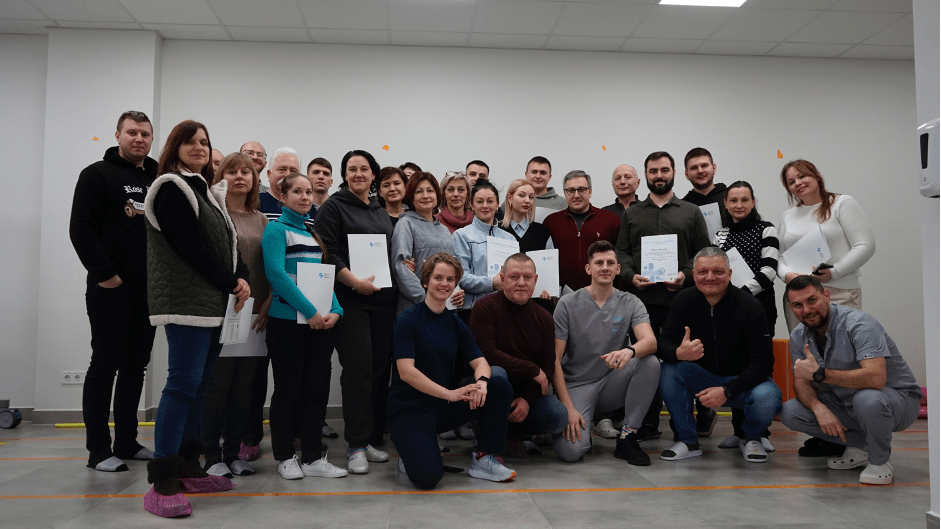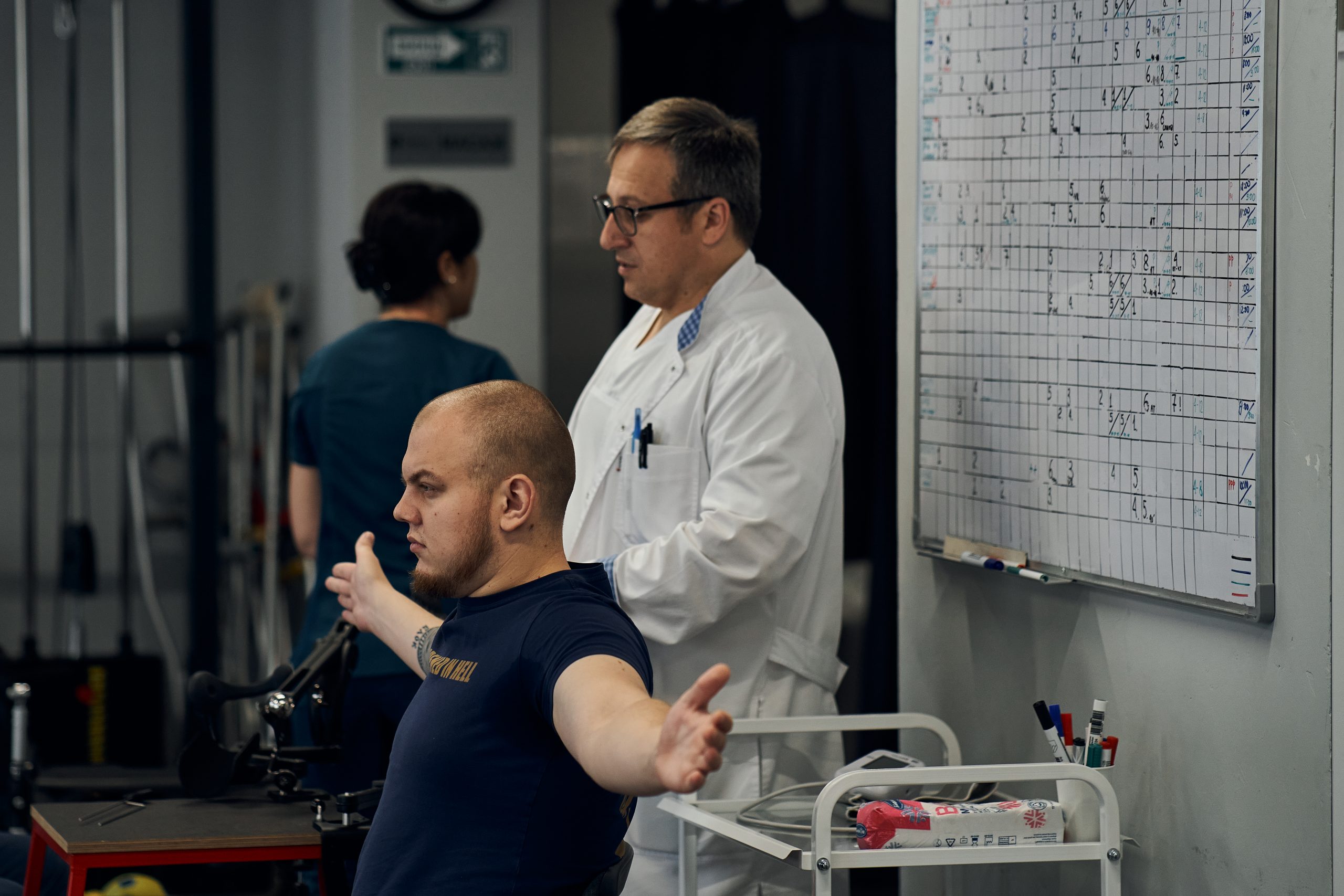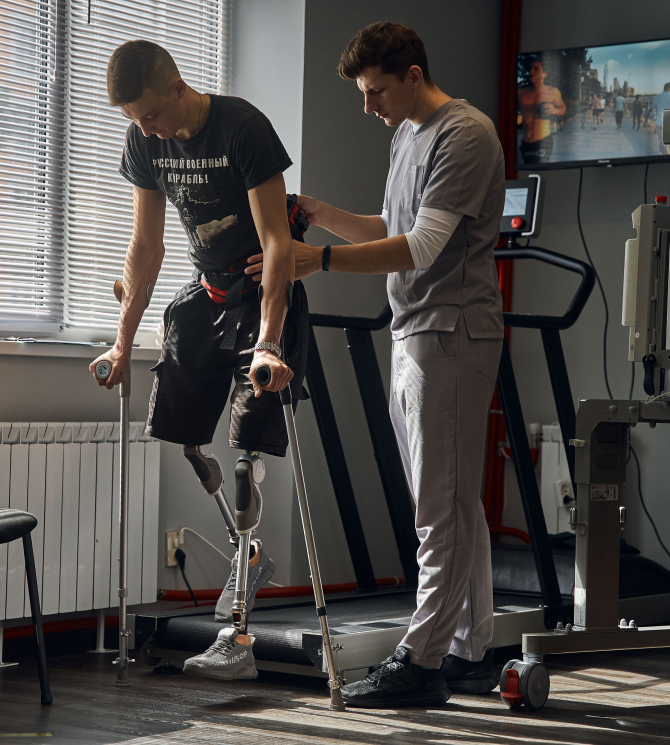Day after day, Ukrainian soldiers are regaining the territories of our country that were captured by Russians. Videos from the de-occupied settlements leave a special imprint on our hearts with joy and sadness at the same time because of the price of these victories.
Since information about losses and the number of wounded is a state secret during martial law, we can only guess how many lives this war has taken and how many more defenders need and will need further recovery – physical and psychological. After all, rehabilitation will determine how quickly we cope with the consequences of the Russian invasion.
In this article, we will share the stories of soldiers who were injured in the fighting and have undergone or are still undergoing rehabilitation. We will also talk about the physical and psychological rehabilitation of soldiers in Ukraine and explain how to recognize that a person needs psychological help.
Police officer Stanislav Borshchak was injured on March 20 when he was returning from a day’s duty in his native Mariupol. At that time, the area, which had seemed safe before, was already being shelled by Russian troops.
I came under mortar fire, got injured in the elbow and humerus, and shrapnel also hit my knee. At that time, the city had been under fire for three weeks, the situation was difficult, people were leaving, and our medics were trying to get out, so it was impossible to get help in a civilian clinic. Some hospitals had already been captured by the Russians, so it is not known what would have happened to me if I had gotten there.
Stanislav Borshchak
The man managed to get home with a severe arm injury, where he stayed for six days. All this time, his family tried to help Stanislav, but the bleeding was severe. The bandages ran out on the first day, and the painkillers lasted for 1-2 days. The policeman tried to get up, but often fainted.
On March 26, the Ukrainian military entered Stanislav’s house. After talking with the man and his family, it was decided to take the wounded man to Azovstal, where the policeman underwent primary surgical treatment of his wound.
“During the week I was at home, purulent processes began. That’s why Azovstal cleaned my hand first: they removed the dead skin and gave me some antibiotics. The plant did not have many medicines, but they still tried to give the wounded at least some antibiotics. Then they did bandages, but every day there were fewer and fewer of them – there were not enough bandages, everything was running out,” Stanislav recalls.

On March 31, some seriously injured people were evacuated from Azovstal by helicopter. Only those who needed urgent help were taken. Stanislav was taken to the Mechnikov Regional Clinical Hospital in Dnipro, where he underwent surgery on the first day and had his bones fixed with special metal structures.
After a month in Dnipro, the police officer was transferred to the Main Medical Center of the Ministry of Internal Affairs of Ukraine in Kyiv. There, two metal plates were placed in his arm to fix the bones, and he underwent a skin graft. Everything was done gradually, because the injury was very complicated. Accordingly, the doctors were in no hurry to give any prognosis for recovery. At the same time, the man was diagnosed with an acoustic trauma and eye problems – dry eye syndrome.
Later, Stanislav began his recovery at the Kyiv Rehabilitation Institute. The man re-learned to bend and straighten his arm, but further recovery without additional surgeries was impossible. It turned out that a complete reconstruction of the arm was necessary.
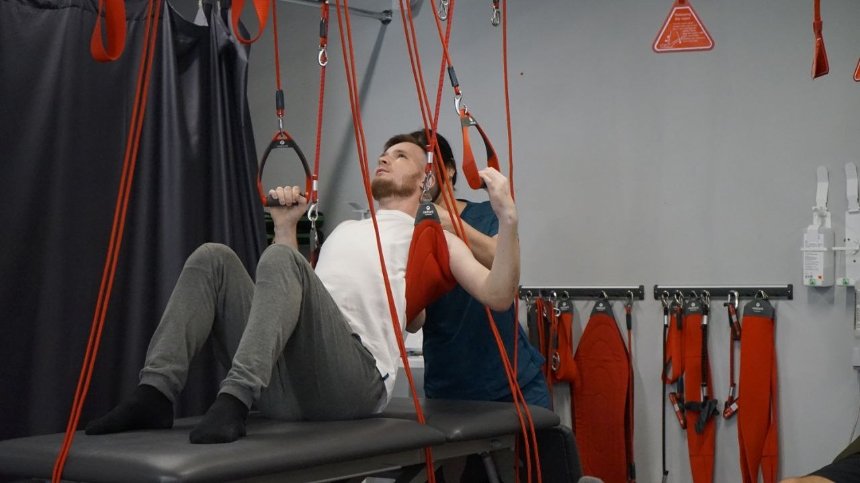
“As the doctors explained to me, first they need to put my arm back together so that the bones can fuse. After the first reconstruction using metal osteosynthesis, one of the plates installed bent. This caused complications. After my arm is reassembled and the bones fused, the contracture needs to be eliminated. This is a restriction of mobility in the joints that causes muscle atrophy. Next, the doctors will see if it is possible to restore the nerve conduction. The plan is to fully restore the functionality of the arm. All these surgeries will take up to a year,” says the police officer.
Stanislav is currently in the hospital undergoing rehabilitation under the guidance of specialists from the international organization Doctors Without Borders. In addition to physical rehabilitation classes, the police officer attends art therapy: he sculpts clay dishes and creates drawings on T-shirts. Stanislav admits that such classes help to distract him from the hospital routine and do something interesting, as well as restore his fine motor skills.
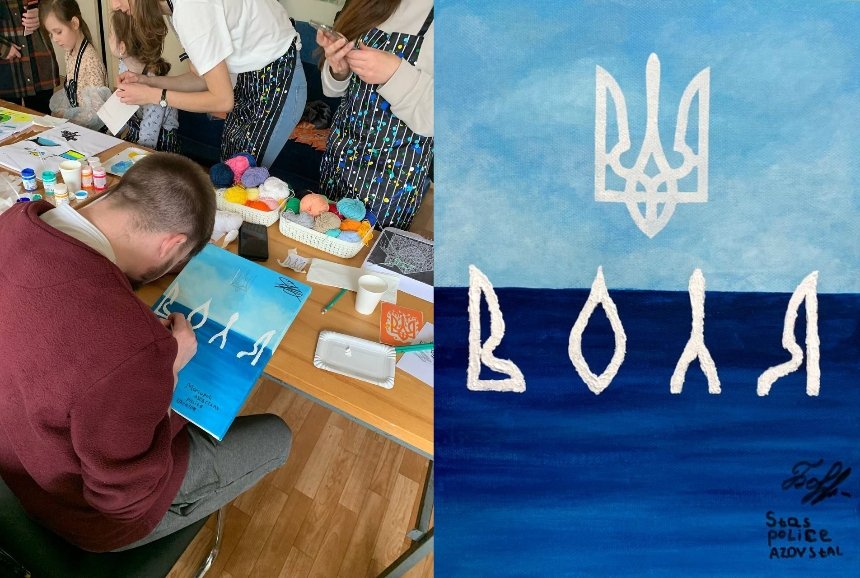
At the same time, the police officer refused to receive psychological help, as he does not feel he needs it. His only concern is that doctors and rehabilitators help him restore his arm as soon as possible.
“I am a person who can withstand a lot, and I don’t need much support. Of course, my arm is uncomfortable, but I can’t complain about it all the time. The time will come when the pain will subside. In the future, I want to return to my liberated city and go to work. To continue living as I did before. Yes, while no one can guarantee how my arm will function, there may be some limitations. But I will not be left without a job,” Stanislav said.
At the time of the full-scale invasion, 20-year-old Andriy Sobkovsky was serving in a military unit in Odesa region. On his 13th month of service, a Russian missile hit the barracks where he was stationed.
“It happened on the night of April 7-8. We were serving, digging trenches, as usual, everything was normal. We went to bed and three rockets hit the unit. Two hit the barracks and another one hit the headquarters. The barracks was completely destroyed, there was nothing left,” Andriy recalls that night.
One of the rockets penetrated the third floor of the building and exploded on the second floor, right above the military, who were in the basement at the time. The strike killed 17 people and injured 6 others.
Together with others, Andriy was trapped under the rubble, where he stayed for almost 12 hours. All this time he was conscious. His legs were crushed by a slab, which prevented blood from flowing to his limbs.
I knew that if, for example, I put my arm in a bad way for 2-3 hours, it would not work anymore. So, being under the rubble, I already realized that I would lose my legs.
Andrii Sobkovskyi
At the same time, Andriy was rescuing his friend who was lying nearby. Around 10 or 11 am, the guys were pulled out of the rubble and taken to the hospital. There, Andriy’s two legs were amputated.
He stayed in the hospital for a month and a half. During this time, the left stump, which remained after the amputation, had already healed. But the right one had to be saved for a long time – it was festering and doctors had to perform additional operations. Eventually, it was decided to transfer Andriy to the Main Military Clinical Hospital in Kyiv.
“My parents were advised by a volunteer who helped to resolve the issue of treatment and rehabilitation. With his help, I was transferred to Kyiv, even though I was supposed to be treated in the region where I served. This volunteer also communicated with a prosthetist from Germany,” says Andriy.
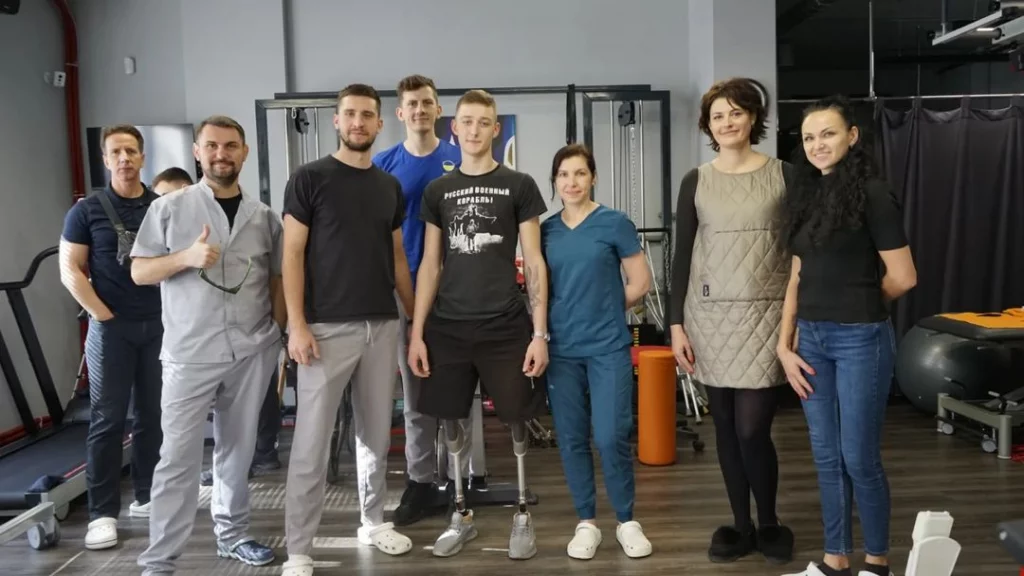
His rehabilitation began while he was still in Kyiv. Since the main load was now on his arms, Andriy started going to the gym, getting massages and other treatments. After two months of treatment in a Kyiv hospital, he was released home for a month.
Later, Andriy began his recovery at the Kyiv Rehabilitation Institute. There, he was measured and prostheses were made. At first, there were training prostheses, in which the guy learned to walk again. And then – German prostheses with more functionality, so that Andriy could not only stand and walk, but even ride a bike.
“Of course, it was hard. At first, I learned to just stand and keep my balance. Then I gradually started walking with crutches: first with two, and then with one. And finally, I tried to move around without crutches,” he explains.

Learning to walk without crutches is a rather long process, says Andriy. If you train very intensively, it can take six months. However, the guy is optimistic. When he returns home, he performs the prescribed exercises and continues to work. However, he had to change his qualification: while he used to be a conductor, he now works on the Ukrzaliznytsia hotline. But he also sees advantages in this – now he can work remotely.
The moral support of his family and friends also helps a lot. At the same time, Andriy refused to receive psychological help, as he does not see any need for it.
“Like all the wounded, I was offered psychological help. But I feel fine and do not need it. I know that I don’t have to give up, I have to move on. I’m young, I still have my whole life ahead of me,” he says.

Rehabilitation: how it works
When we talk about rehabilitation, we primarily mean a set of measures: medical, psychological, physical, professional, labor, social and domestic, etc. It is thanks to them that a person restores or compensates for the functions of his or her body that have been impaired or lost after an injury.
Whether or not to receive rehabilitation assistance is up to each individual. But the task of the state is to provide such an opportunity. After Russia’s invasion of Ukraine in 2014, the system of rehabilitation for the military was just beginning to take shape. Now, after the full-scale invasion of Russian troops, it has been improved.
A lot has changed since February 24. For example, the Kyiv Institute of Rehabilitation has re-profiled to work with the military. We are actively working with Western rehabilitation protocols. At the same time, we purchase various equipment to make the process as efficient as possible.
In the early postoperative stages, primary rehabilitation begins under the supervision of doctors. Its purpose is to prevent possible complications while a person is in the hospital. Once this stage is completed and the wounds heal, the active phase begins.
“We need to understand that rehabilitation of the military cannot be done in a short time. We have to check whether the result is really fixed, especially if a person wants to return to service. To prevent the injury from manifesting itself on a combat mission,” says Ihor Svyrydenko.
Once the goal is achieved, rehabilitation is completed and the sports phase begins. It is not about participating in competitions, but rather about maintaining the result, increasing speed, endurance and strength to feel comfortable in society. Then it all depends on the person and their plans.
“Everything is different. Someone with a high amputation above the knee wants to return to the army to continue serving. And there are people with injuries of such severity that they can no longer be in the army. So they are rehabilitating in society, returning to civilian life, looking for work,” said Ihor Svyrydenko.
In the case of amputation, the Ministry of Defense of Ukraine or another government agency to which a person belongs refers him or her to a prosthetist. At first, it can be a training prosthesis, and then a final one. You can consult with a prosthetist or physical therapist to choose the latter.
During the first six months to a year after prosthetics, it is important to change the size of the socket, because the stump also changes during this period. During active rehabilitation, this need may arise every week. Therefore, it is important to have quick access to a prosthetist, so that at any time you can come, replace some part of the prosthesis or adjust it to your walking.
Psychological recovery
Psychological assistance plays an equally important role in the rehabilitation of the military (both veterans and those who will continue to serve).
Tetiana Sirenko, deputy director of psychological services at the Lisova Polyana Center for Mental Health and Rehabilitation
It is important to separate psychological assistance to active military personnel and veterans. These are completely different approaches, because veterans are people who are returning to society. The task here is to overcome the consequences of traumatic events, recover, adapt and reintegrate into society. In the case of active military personnel, the assistance is aimed at restoring a person’s mental health and resources to the level that they can return to service and continue to perform combat missions.
Returning to civilian life in the midst of active hostilities in the country is an extremely difficult task. After all, we are talking about constant events that retraumatize a person over and over again. In addition, veterans can often feel responsible for the independence of the state, knowing that they know how to fight and have the relevant experience. In the case of serious injuries and disabilities, the difficulty also lies in adapting to new living conditions and new capabilities of the body.
As for active military personnel, it is about overcoming the consequences of traumatic events, recovering from chronic combat stress, returning to a resourceful state and restoring the regulation of the emotional and volitional sphere. In other words, it is about returning the soldier to a state of combat readiness.
Psychological support is needed not only after injuries and illnesses, but also after complex combat operations in which people can be involved. Or after losses, when soldiers witness the deaths of their comrades and colleagues. In an ideal world, such assistance should be offered to everyone, but in practice, this is not always the case.
“It happens that the military refuse psychological assistance. According to statistics from other countries, about 70% of people who have experienced traumatic events can cope with their condition on their own, with the support of loved ones or professionals. At the same time, there are 30% who will need specialized psychological and medical-psychological assistance. Therefore, we cannot say that everyone needs it. But it should be accessible and timely,” explains Tetiana Sirenko.
It is important to understand that it is not a shame to seek psychological help and support, and it is absolutely normal to need it. However, such help cannot be imposed, otherwise a person loses motivation to accept it.
How do you know if a person needs psychological help?
Of course, each person is individual and may feel the need for psychological help and support at different points in their lives. But there are certain symptoms that can signal the effects of chronic stress or a reaction to traumatic events. If you notice them in yourself, it may make sense to seek help.
Intrusive thoughts and memories. Flashbacks or vivid memories related to combat or other traumatic events may arise spontaneously. In such a situation, a person seems to fall into a memory and feels as if they are reliving the situation over and over again. As a rule, such memories are painful and uncontrollable.
Hyper-arousal. A person becomes too irritable, has problems with self-regulation of the emotional sphere, and all this affects his or her life and functionality, including the ability to perform combat missions. This includes sleep disorders, when a person cannot fall asleep for a long time or has difficulty falling asleep. Nightmares can also occur.
Avoidance. This refers to situations where a person avoids absolutely everything that reminds them of traumatic events. This is especially difficult in a situation where a person continues to serve and absolutely everything reminds them of their combat experience and trauma. One of the manifestations may be avoidance of close relationships and conversations with brothers and sisters in arms.
Excessive anxiety. A person constantly experiences anxiety that does not correspond to the real situation. This anxiety is very strong and chronic.
Depression and apathy. The person is faced with an unwillingness to do anything, feels very low energy, lack of strength, and fatigue. Sometimes suicidal thoughts may occur. This may indicate exhaustion.
“If these symptoms are present, last for several weeks or more than a month, and do not go away or worsen at all, this is a signal that it would be useful for a person to seek support. A psychologist can help you learn how to unload the nervous system, work through traumatic experiences so that they do not bother you in the future, so that they do not arise again and again, and do not affect the quality of life and functioning of a person,” adds Tetiana Sirenko.
This material is a part of the special project “New Ukraine”, in which the Nash Kyiv team raises important topics for Ukrainian society: new job, new home, new culture, new business, new technologies, new stories, new Ukrainians and new reality. We help our readers solve urgent problems, become stronger and make Ukraine stronger.
